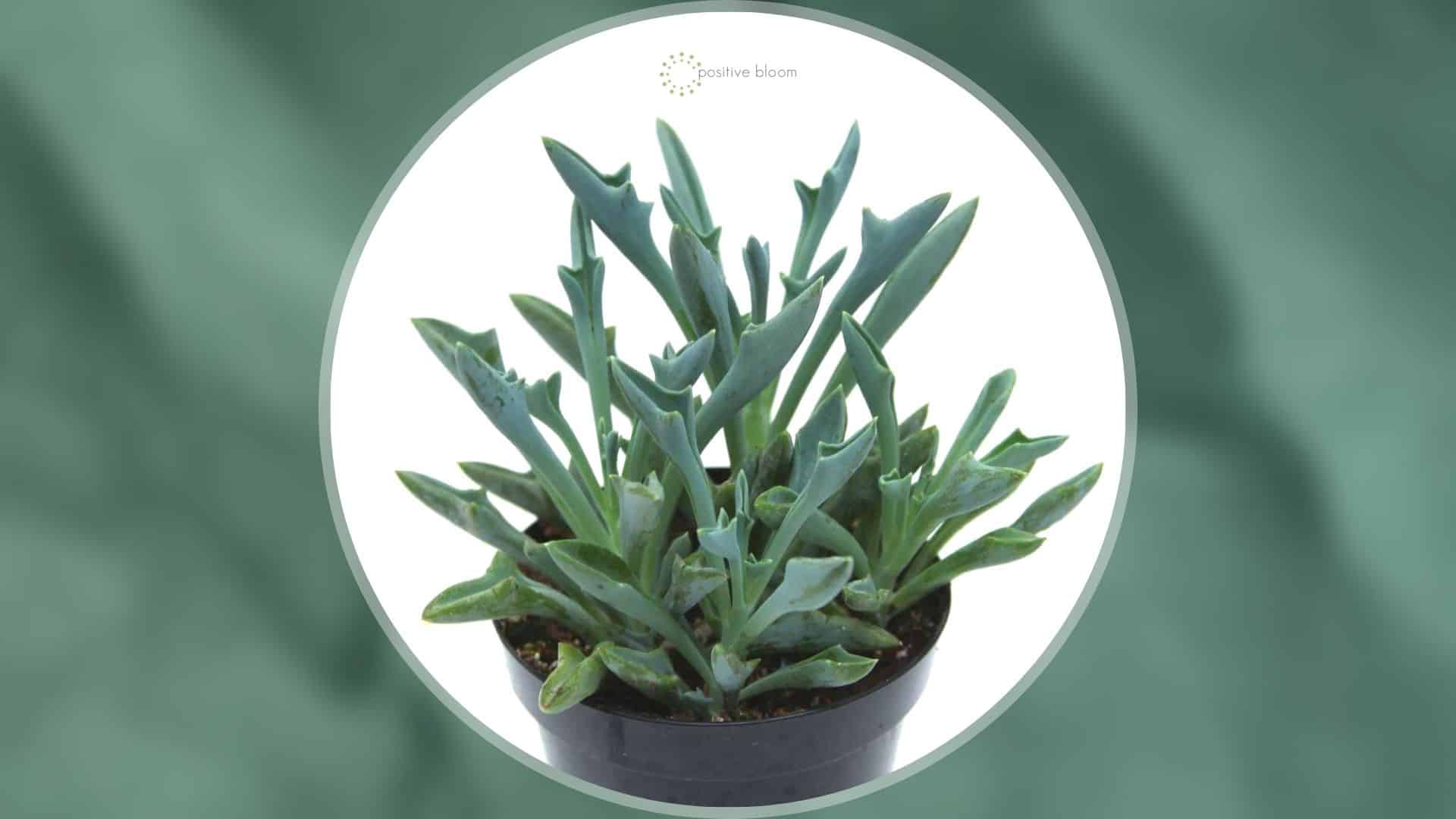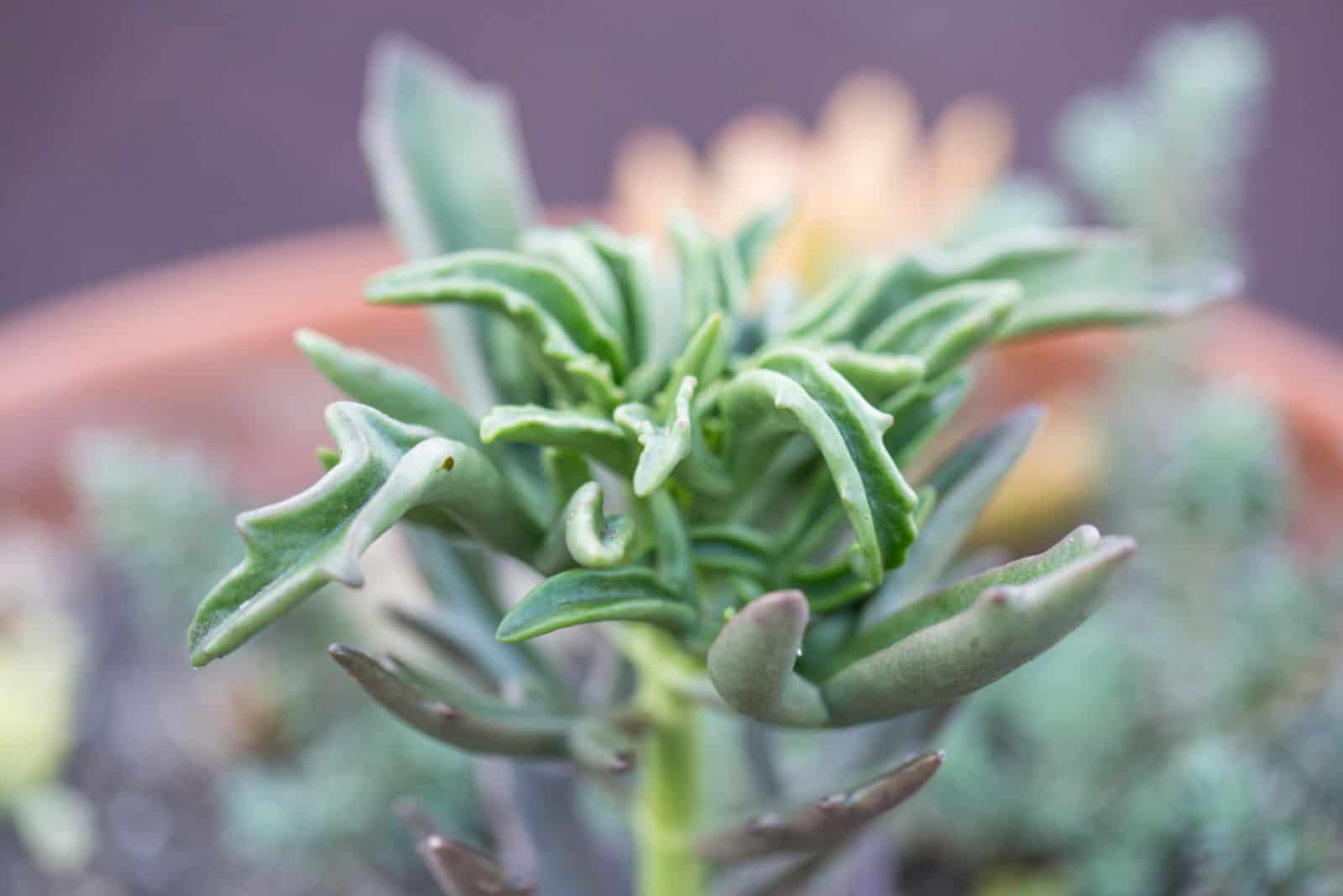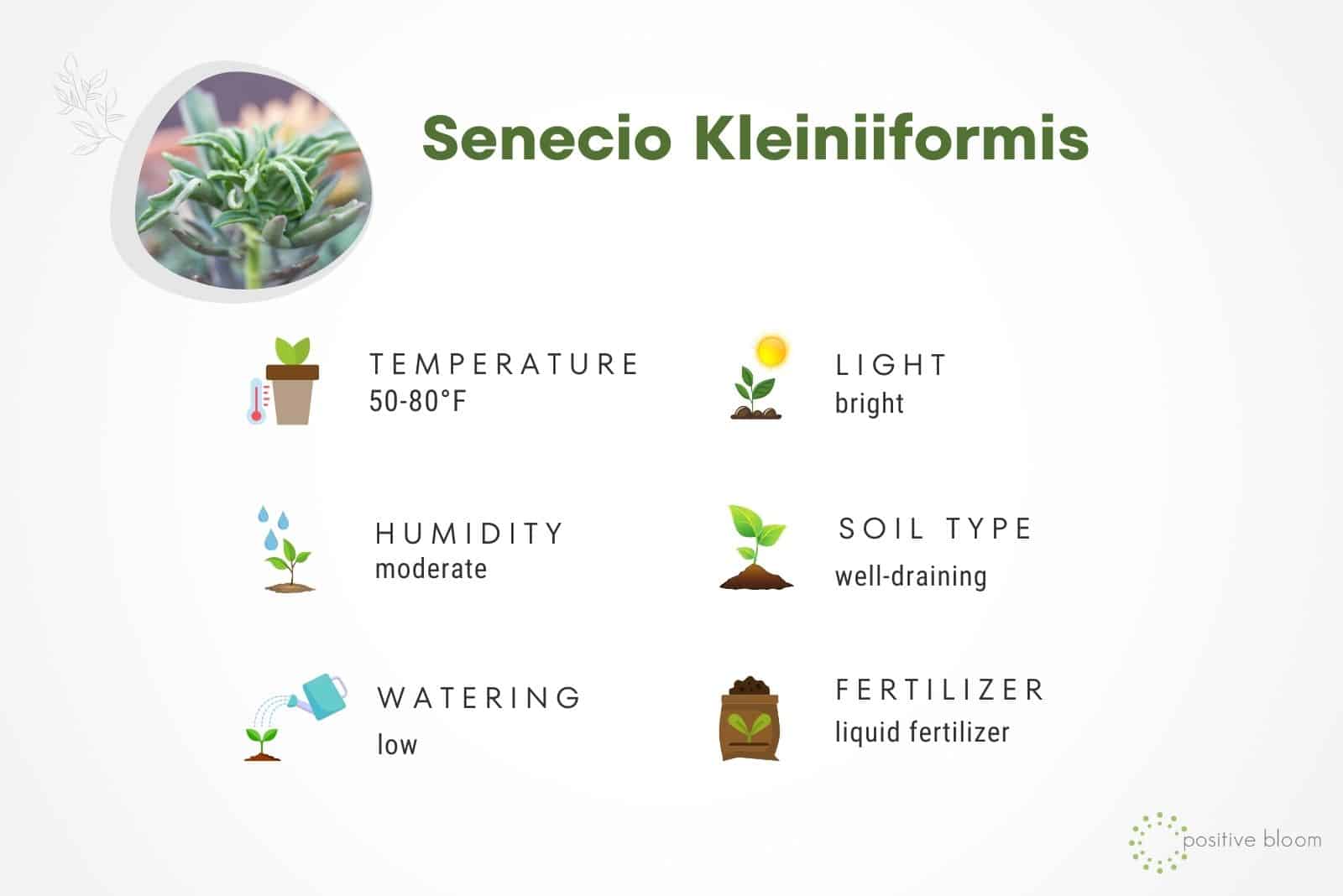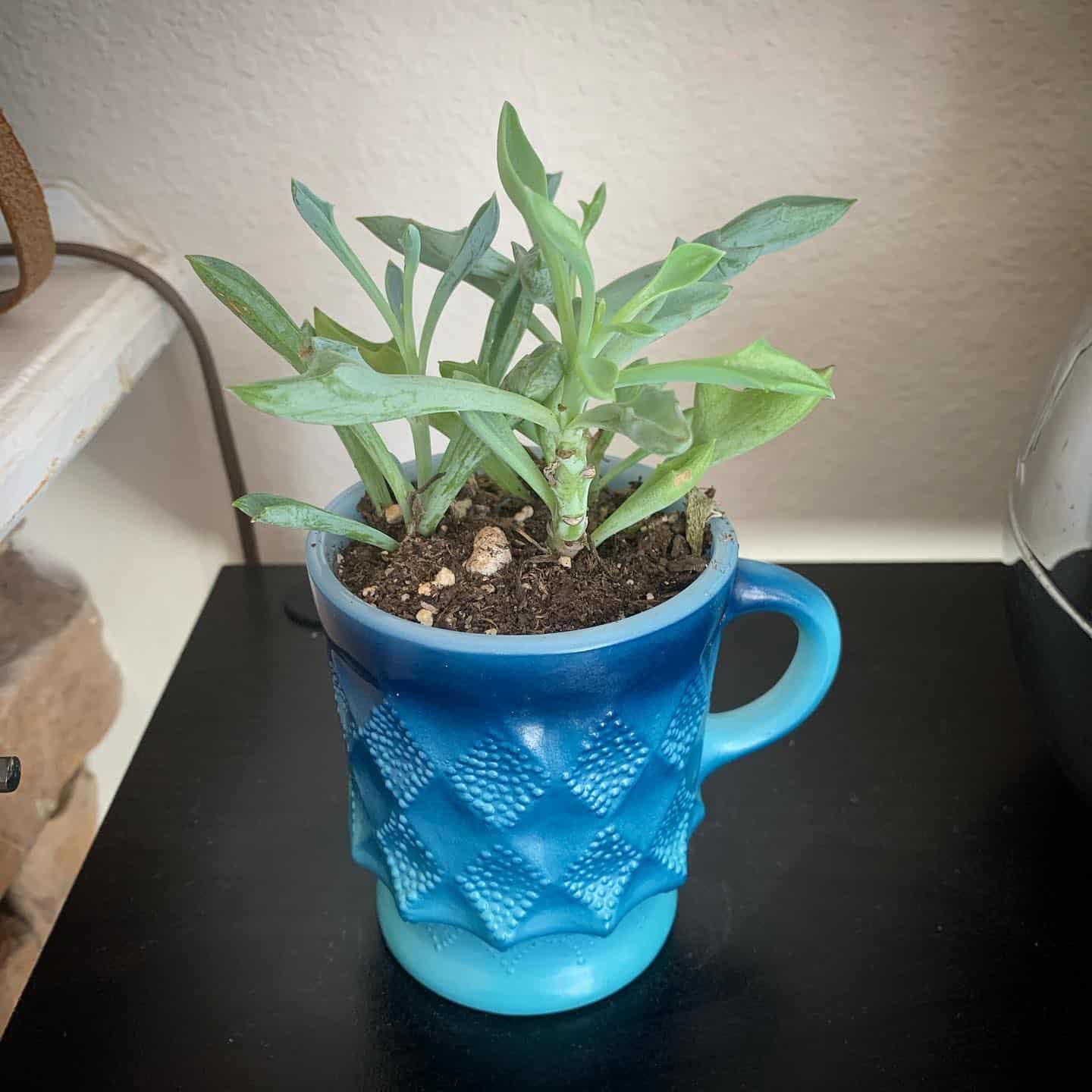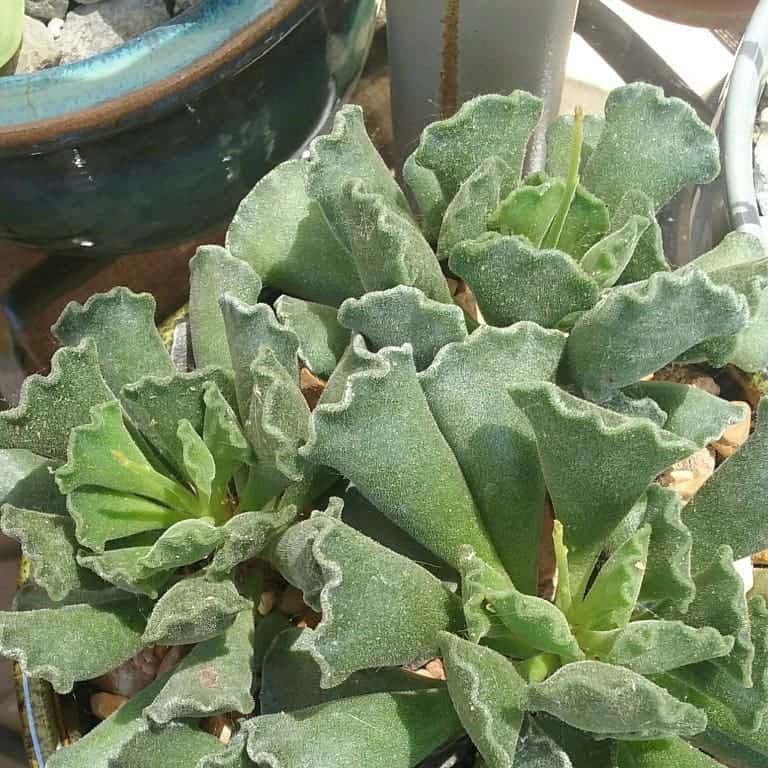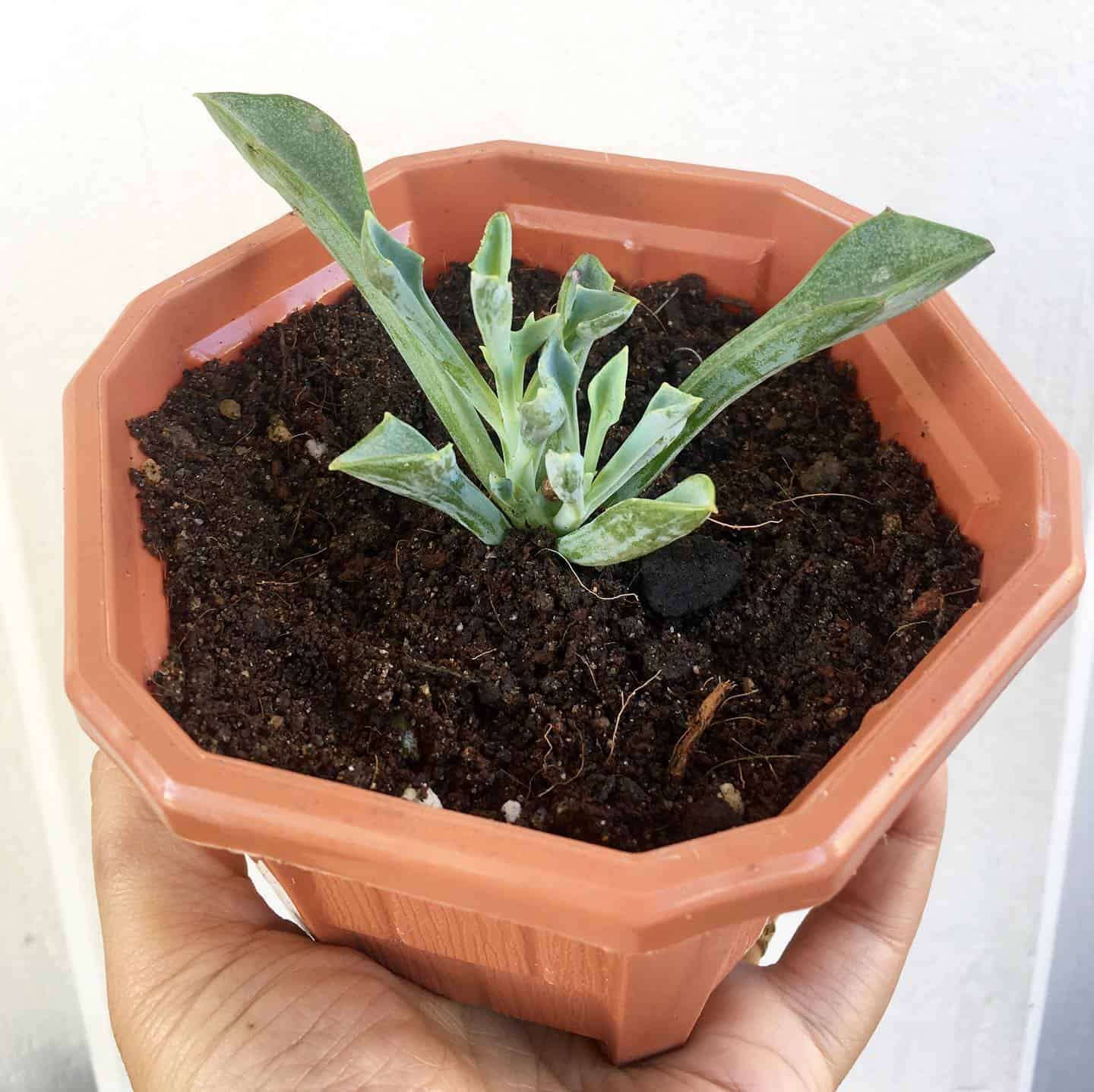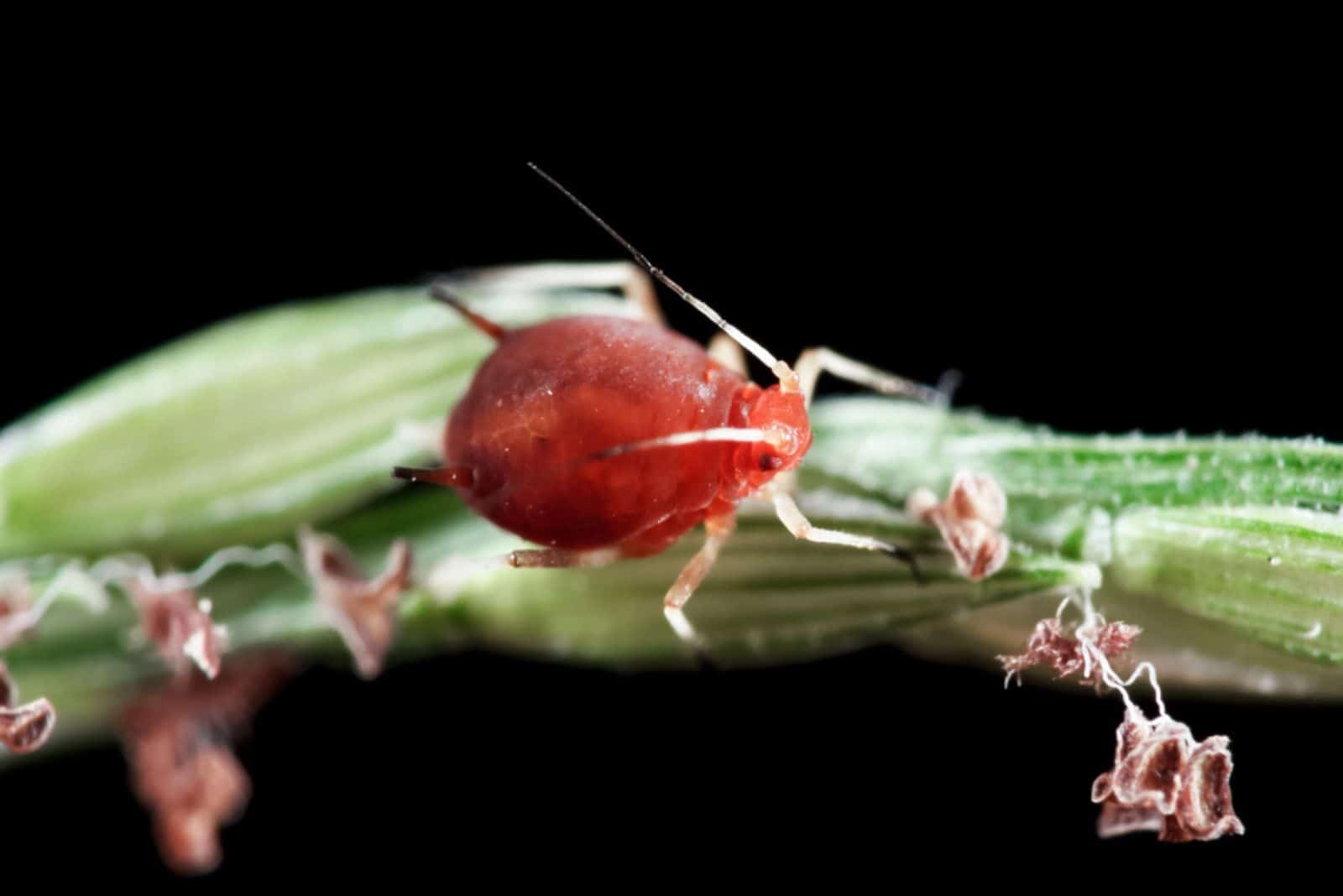Are you a sucker for succulents like me? If so, then you’ll love learning about one of the prettiest succulents in the world; the Senecio kleiniiformis!
Otherwise known as the Spear head, the Senecio kleiniiformis is a beautiful succulent that produces blue-green, fleshy, triangular leaves along with a lovely yellow flower that can make your space more cheerful and lively!
It is also a relatively small plant, so you can put it basically anywhere (though you should take into account its growing conditions).
We are going to discuss its common features and how to take care of it, so keep reading!
Let’s begin with some basic info about this sublime succulent:
| Family: | Asteraceae |
| Genus: | Senecio |
| Scientific name: | Senecio kleiniiformis |
| Common names: | Spear head, Reindeer Antlers, Spear head senecio |
| Plant type: | Perennials |
| Native habitat: | South Africa |
| Plant size: | 12 inch |
| Growing season: | Autumn, spring |
| USDA hardiness zones: | 9b-11b |
What Is The Senecio Kleiniiformis?
The Senecio kleiniiformis, otherwise known as the Reindeer Antlers and Spear head senecio, belongs to the Asteraceae family. It is native to South Africa, though nowadays it can be seen anywhere in the world.
This is a slow-growing succulent plant that produces trailing branches and spear-shaped, blue-green leaves, hence the nickname “Spear head senecio”. These branches can grow up to 2 feet long (though you can always prune them to maintain a certain size). The leaves grow about 4 inches long and 1 inch wide.
In addition to these lovely leaves, the Spear head senecio also starts blooming at the end of the summer or in the early fall. If you are growing it outside, then these flowers will attract a lot of pollinators and beneficial insects to the garden!
We have already mentioned that the plant stays relatively small – it can grow about 12 inches tall.
When it comes to toxicity, this plant is not considered poisonous; however, you shouldn’t eat it either!
If you like this plant, then you should also consider getting other Senecio varieties to keep it company. My personal favorite is the String of dolphins, though my roommate absolutely loves her String of tears plant (she says that it is quite comforting when she is feeling down).
How To Take Care Of The Senecio Kleiniiformis
Since they originate from relatively dry areas, they are tolerant to most environments. Therefore, caring for them isn’t too demanding. They thrive in USDA hardiness zones 9b to 11b, which is also something you have to take into consideration if you are planning to grow a Spear head outdoors.
Keep in mind that these are not frost-hardy plants, so if you live in a region where it gets rather cold, I would suggest that you bring your plant indoors.
Other than warm temperatures and bright light, you won’t have to worry too much about the other growing conditions.
Let’s look closer!
Soil Requirements
Well-draining soil is essential for succulent plants because they hate having a lot of water around their roots. This is because soggy soil attracts root rot, a deadly fungal disease.
This is why you will need a potting soil mix that consists of additives that improve soil drainage. Another thing that you should take into consideration is aeration. Ultimately, you have to make sure that the soil for your Senecio kleiniiformis is porous and well-draining.
You can either buy a premade succulent mix or create your own potting soil. I think it’s better to make it yourself because you know all the additives it has. The most common soil additives include perlite, pumice, gardening sand, and orchid bark, which are all known for improving drainage and aeration.
You can combine:
• 2 parts potting soil, 1 part gardening sand, and 1 part perlite
• 2 parts gardening sand, 2 parts potting soil, and 1 part perlite
• 2 parts potting soil, 1 part gardening sand, and 1 part pumice
Temperature Requirements
These plants are native to South Africa, which means that they are used to growing in a warm climate. Remember, these plants are not frost-hardy, so under no circumstance should they be exposed to cold temperatures for too long – this can lead to a number of issues, including death!
This is why most gardeners tend to keep their Senecio Kleiniiformis outdoors during the summer and bring it inside as the temperatures lower. Besides, you have more control over the growing conditions when you grow your plants indoors.
The best temperatures for the Spear head plant range from 50 to 80 degrees Fahrenheit, though they can withstand temperatures as low as 40 degrees Fahrenheit.
Keep in mind that you shouldn’t put this plant in drafty areas such as near vents or drafty windows. Fire places, radiators, and other heating sources are also no go.
Light Requirements
These low-growing plants thrive in partial shade and some bright light. For instance, those spiky leaves like the morning sun, but they could get sunburned if they are exposed to full sun on a hot summer day.
While outdoor Senecio plants can grow in full sun, it can be harmful as well. Therefore, keeping your plant near a window that gets some morning sun, but for the rest of the day provides bright indirect sunlight, is ideal for these little ones.
Low light settings should also be avoided. In most scenarios, lighting issues lead to etiolated succulents.
Water Requirements
Most plant parents are used to being extra careful when it comes to watering. This is because the majority of tropical plants need frequent watering, and there is a fine line between overwatering and just the right amount of water.
However, this is not the case with the Senecio.
These plants are extremely drought tolerant and should be left without water for a longer period of time. Ideally, you should water your little succulent only once the soil has completely dried out.
Sometimes, you cannot be sure whether the soil is completely dry. You can determine this by sticking your finger into the soil, lifting the pot (a light pot indicates that your string of tears needs water), and observing the color of the topsoil (light-brown soil means that it should be watered).
If you water this plant together with your tropical plants, it will most likely lead to overwatering. Overwatering is often accompanied by root rot, which can completely ruin your plant. Smelly soil and yellow leaves are indicators of root rot.
A great way to improve drainage and soil is to grow your plant in a pot with drainage holes in the bottom, which will allow for the extra water to drain away.
When it’s time for watering, give your plant a good soak. Only stop watering when water begins to drain out of the drainage holes in the pot.
Humidity Requirements
Another thing that they don’t like, besides frequent watering, is high humidity. These succulents grow best in moderate humidity, so if your home’s humidity level is below 50%, you can use a humidifier to raise it. Another method to raise humidity is creating a pebble tray or misting your plant.
You can also keep your plant in a more humid room (kitchen or bathroom), but ensure that the humidity is not too high for it.
Fertilizer Requirements
The Senecio kleiniiformis is not a heavy feeder. Still, you have to give it some plant food so it can grow and thrive.
You have to be careful when fertilizing – just like overwatering, overfertilization can be troublesome for your plant and often leads to wilting, stunted growth, and a malformed appearance.
Therefore, only lightly feed these little succulent plants!
I would suggest using liquid fertilizer or spiky granules, although you can also add worm castings or fish emulsion.
Pruning
Fortunately, you don’t need to prune these plants regularly.
For instance, you can simply trim off any leaves that are scorched, yellow, crispy, or brown to keep the plant looking neat.
They should generally be pruned in spring or after blooming in the fall. You can also prune the long branches to keep them growing in a certain direction.
Repotting
The Senecio kleiniiformis is a slow-growing plant, which means that you won’t have to repot it every season. You should repot the plant whenever you notice that the roots are coming out of the drainage holes or above the soil surface.
Prepare adequate soil, find a pot slightly larger than your current one (terracotta or unglazed ceramic are the best), and simply repot the plant. Examine the roots to see if there are any rotting ones, and trim any you find.
Propagation
The Senecio kleiniiformis is one of the easiest plants to propagate. If you are a beginner gardener who doesn’t have much experience with propagation, I would recommend practicing on this plant.
There are three ways to propagate this plant: by cuttings, offsets, and seeds. Stem cuttings can be propagated in either water or in soil.
Stem Cuttings In Water
You will first have to prepare a clean jar, sterile knife or pruning shears, and a new pot for water propagation.
Here are the instructions:
1. Choose a stem cutting that is in good health and has a few leaves and nodes attached.
2. Using your knife, cut a section where two leaves connect.
3. Place the stem cutting in a jar or any clear container filled with warm water. Ensure that a node is immersed in each cutting.
4. You should change the water every other day until the plant stem cuttings have formed roots that are about half an inch long.
5. After they have established roots, you should put your baby Spear head in the soil.
Stem Cuttings In Soil
The Spear head Senecio can also be propagated without the cutting being placed in water. The stem cuttings are obtained using the same procedure as described above.
You place the cuttings immediately into the soil as opposed to putting them in water first.
Here is an example of how to plant stem cuttings in soil:
1. Dig a tiny hole in some fresh soil mixture, then place the new cutting inside. Make sure the node is below the soil line if you’re utilizing a stem cutting without roots.
2. To make the plant cutting stand upright, gently press the soil down around it.
3. Place the container in a location with the right amount of humidity and light, as well as appropriate temperatures.
Offsets
The easiest way to propagate plants is by using offsets or pups. These are new baby plants that will develop and mature. All you have to do is remove them from the mother plant by hand – gently pull the pup with your finger without damaging it or the mother plant.
When you have separated it, leave it in the open air for a few days to let the baby plant form a callus and prevent spreading infections. Then, simply put your baby plant in the soil and take good care of it!
Seeds
Growing houseplants from seeds is not something we usually do – most houseplants are bought already established or propagated using the methods we discussed above. However, there is still an option to grow an entire plant from seeds, although it will take much more time and patience.
If you want to try and grow a Senecio kleiniiformis from seeds, you will have to either take seeds from your current plants after they’ve bloomed and been pollinated or buy them from a dependable seed supplier.
Prepare the soil and seed trays to put the little seeds in – just sprinkle them on the surface and put a thin layer of soil over them. Keep the soil moist until little seedlings start appearing. Once the seedling has grown, you should transplant it to a big pot.
Common Issues With The Senecio Kleiniiformis
Even the hardiest plants can run into some issues. We already mentioned that these plants are not frost hardy, and they can get seriously damaged by being kept in lower temperatures for an extended period of time.
In addition, low light settings can also lead to problems, as can overwatering.
However, these succulents are also susceptible to pests and diseases.
Let’s take a closer look.
Pests & Diseases
The most common pests that invade the Senecio kleiniiformis are aphids, spider mites, and mealybugs. They love munching on those fleshy leaves and stealing your plant’s nutrients!
Signs of pest infestation are discolored leaves, although you might even spot them crawling all over your plant.
To get rid of pests, you can either use neem oil or insecticidal soap. However, you can also try spraying them with water or using pesticides.
When it comes to plant diseases, we have already mentioned root rot. This is one of the toughest diseases, and it usually appears due to overwatering. If the soil starts to smell and the plant starts yellowing and wilting, you should immediately suspect root rot.
Carefully take the plant out of its pot and examine the roots. If you see any rotting or mushy roots, trim them off. Repot the plant in fresh soil and treat it with fungicide.
Softened Stem
Softened stems are another result of overwatering.
Checking the soil’s moisture content before watering will help you prevent this problem. By allowing it to dry and keeping an eye on its progress, you can try to revive the plant.
You can cut any healthy stems from the plant and replant them in a small pot with new soil if the plant is seriously damaged. Put the unhealthy soil and roots in a plastic bag and seal it shut to dispose of them.
Leaves Losing Shape
Believe it or not, underwatering can also be an issue that leads to leaves losing their spikes!
Even though these plants can go without water for a while, you still have to give them some water every now and then. Again, almost all issues stem from watering habits, so make sure that your plant is not thirsty!
To Sum Up
The Senecio kleiniiformis is a must-have plant for all plant lovers out there!
It won’t take up too much space, is quite easy to grow, and you can also practice propagation with it, though you should keep an eye out for pesky pests that can infest your little spikes.
However, a healthy plant is far less susceptible to pests and diseases, so make sure to take good care of your Spear head plant!
That’s all, folks. I hope this article was helpful.
Until next time!

